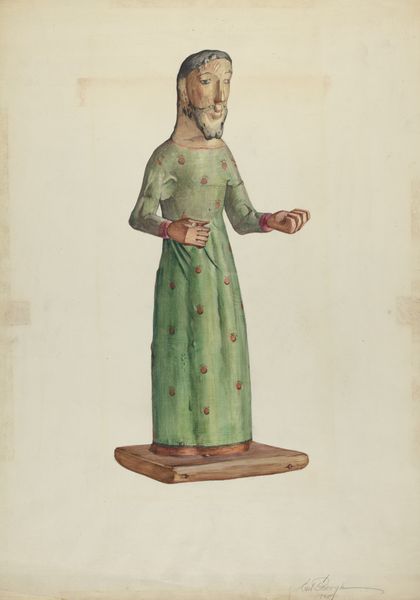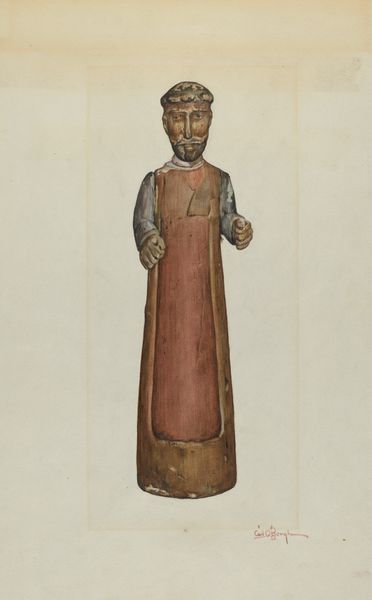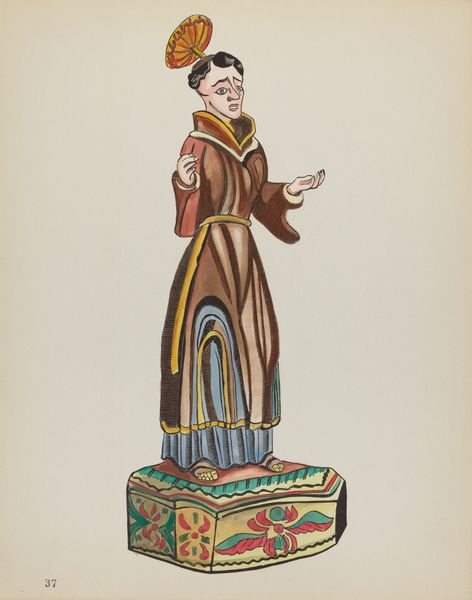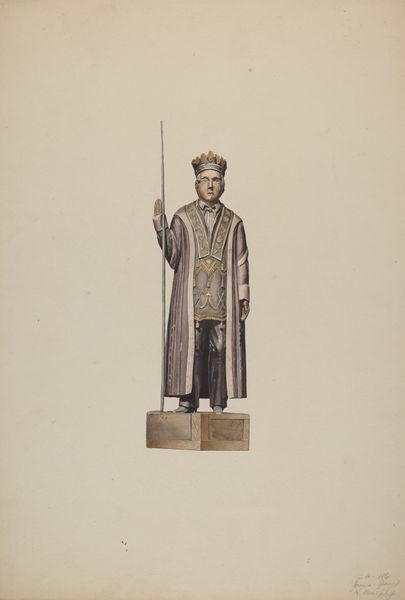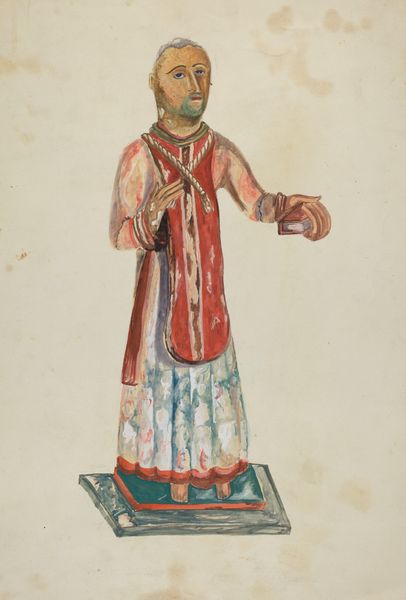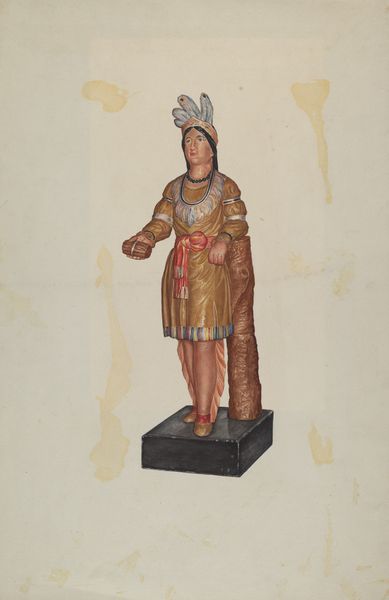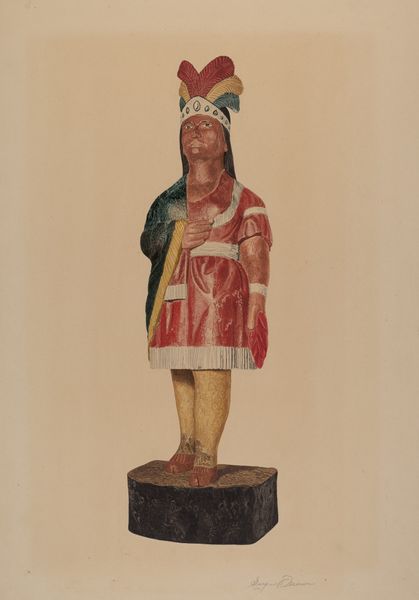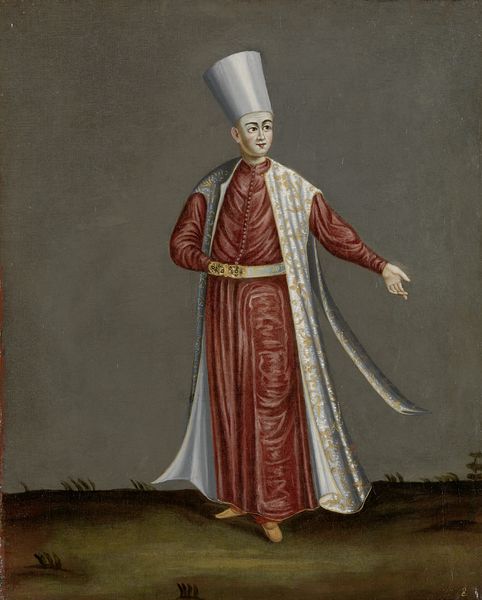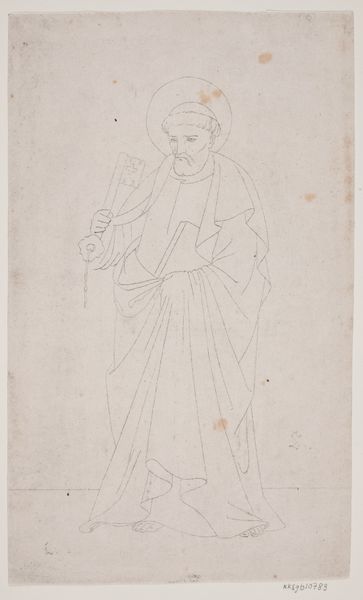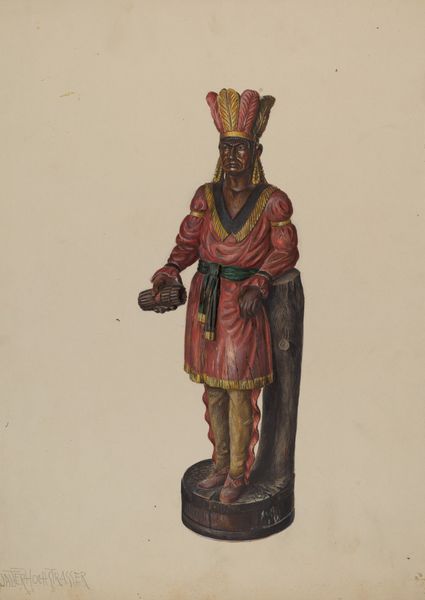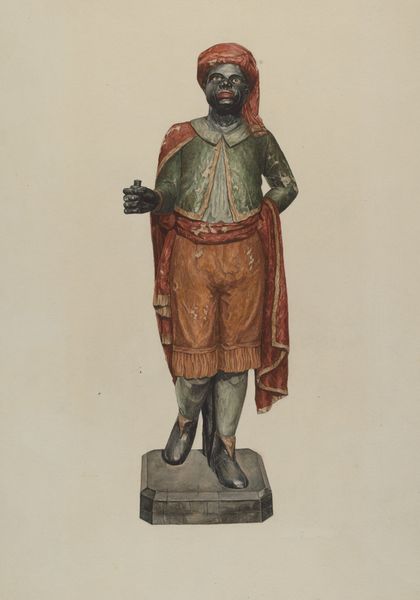
drawing, coloured-pencil, watercolor
#
portrait
#
drawing
#
coloured-pencil
#
figuration
#
oil painting
#
watercolor
#
coloured pencil
#
watercolour illustration
#
genre-painting
Dimensions: overall: 55.8 x 38.5 cm (21 15/16 x 15 3/16 in.)
Copyright: National Gallery of Art: CC0 1.0
Curator: Allow me to introduce this striking piece entitled "Tradesman's Sign: Chinese Man," dating back to around 1939, medium colored pencil on paper. It is classified as genre painting, featuring the figurative depiction of a person that is part of society. Editor: Immediately, I see a figure that seems both dignified and somehow… vulnerable? The slightly faded colours give it this nostalgic, almost dreamlike quality. I get a strange feeling that he has to ask for understanding, given the hands held forward, upturned. What does this represent historically? Curator: The sign serves as a poignant window into the representation of Chinese individuals in early 20th-century Western visual culture, functioning as both commercial signal and cultural marker. Such pieces frequently reproduced stereotyped features, sometimes for promotional purposes and often informed by dominant cultural prejudices. Editor: Right, those stereotyped features, so prevalent, almost to the point of caricature. Yet there's something about the composition. The braid, that pop of ochre. Even though he’s a symbol, someone took the time. Did he feel commodified, erased, like part of stage dressing in the society it reflected? Curator: Absolutely. It reflects power dynamics within the historical landscape. While created perhaps with the intention to attract a very specific patronage, the very existence of the artwork perpetuates these cultural tropes and therefore contributes to an existing discourse. How did it work institutionally? Editor: As if in a shadow box. It brings to mind those little figurines, and even more acutely, issues of display and value – the idea that even the most culturally freighted symbol, once distanced enough, ends up behind glass as an art object, aestheticized. And here we are interpreting. Curator: Precisely. The journey from public sign to artifact in a museum signifies an immense shift, raising many uncomfortable questions about the politics inherent to how such objects acquire art-historical status and significance. I find these questions really difficult. Editor: And I get what you’re saying about the difficult part. Something in this invites looking closely, an intention which I want to approach cautiously. The slight smirk… that hand. The question becomes – what are we inviting the viewer to see and know about representation and commodification through it?
Comments
No comments
Be the first to comment and join the conversation on the ultimate creative platform.
